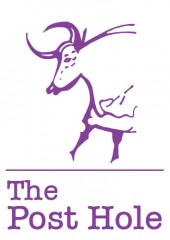- What is your job title?
Curator of Archaeology - What are you current projects, museum or personal?
We will be soon embarking on a complete refurbishment of the museum, costing ?2 million. We will be setting a third of the museum over to science exhibits, taking the museum back to its original aims and widening the scope of the exhibits to incorporate a wider span of periods, Bronze Age to around the 1600's. We will be closing November next year (2009) and re-opening to the public August 2010. - What first got you interested in Archaeology?
Playing in mud! The older sections in History interested me. As a child we holidayed on a boat; one year an excavation was taking place nearby and I joined in for a day. I was under 16 and it would probably be against every health and safety law now. - How did you get into the Archaeology careers field and your current job?
I got too old and it got too cold to be a field archaeologist! My first job was with English Heritage and a lot of my working career was through chance. I started on the circuit as a field archaeologist then went to Bournemouth University to do a diploma in Field Archaeology. From there I went on to do more digs. Then I went to Durham University to do an undergraduate degree, skipping the first year. I've worked in France, training conscientious objectors in archaeology, and cataloguing medieval buildings for English Heritage. From then I worked in curatorial jobs and have been at the Yorkshire Museum for four years. - What kinds of experiences have got you where you are today?
Flexibility, do as much as you can. Volunteering is always important. Get as much skills in the field as you can and don't take no for an answer! - What are some of the best parts of your job?
I get to play with really cool things. There is such strong archaeology in York and I get to get close to it. - And some of the worst?
I honestly don't think it has any. We've no benefactor and we have to raise our own money and we have to deal with an old building and institution, with a vast quantity of inherited material. - How much do you have to deal with members of the public?
All the time and I love them! Whether its enquiries, talks, tours, it's the only way to know what people want. - What are your thoughts on the state of the museum system? Do you think it is adequate, is there any room for improvement and if so where?
There's always room for improvement. More money is always needed in different ways. Extra resources should go to regional museums as the bigger museums usually get the funding. Work should go to popularising the tiny museums. - How do you see the current Archaeological climate in terms of jobs in this country?
Absolutely terrible in terms of pay scales! The problem is the system is churning out so many undergraduates to few jobs. However its getting better as more opportunities are appearing in the cultural sector where the transferable skills of archaeology come in use; such as the National Trust or the Forestry Commission. - What advice do you have for students wishing to get a job in Archaeology or Heritage Management?
Get as many skills as possible, volunteer and do the extra work yourselves. Your C.V. has to shine as there will be so many other candidates for jobs with the same degree. - What are your experiences of job interviews?
Personally I quite like them. I've never not succeeded which is a strange situation. I've been on the other side of quite a few interviews. - Do you have any interview technique tips?
Do your research, find out about the job and get to grips with what it entails, find out about the panel; their interests, positions etc. Come prepared and be honest and brave. Don't blag, the people interviewing you will probably know more and can tell. The ones who shine in interviews are the ones who answer questions in a relaxed way and include detail.
With thanks to Andrew Morrison, Yorkshire Museum.




